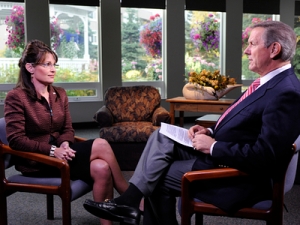 In researching my article on carbon financing in the developing world, I had the opportunity to speak with Erik Wurster, the carbon finance manager at an organization called E+Co. E+Co has been on the forefront of this industry and has been one of the leading innovators. Newsweek recently highlighted their efforts to distribute clean-burning cookstoves – a topic I have discussed in this journal – in Ghana. It provides a great overview of how this complicated process works. In an article for Next Billion, Tracy Smith of E+Co describes the company’s focus:
In researching my article on carbon financing in the developing world, I had the opportunity to speak with Erik Wurster, the carbon finance manager at an organization called E+Co. E+Co has been on the forefront of this industry and has been one of the leading innovators. Newsweek recently highlighted their efforts to distribute clean-burning cookstoves – a topic I have discussed in this journal – in Ghana. It provides a great overview of how this complicated process works. In an article for Next Billion, Tracy Smith of E+Co describes the company’s focus:
E+Co, a mission-driven clean energy investor in developing countries, is working to implement strategies that enable Wall Street investors to put capital to work in developing countries through the carbon markets. Unlike more traditional carbon finance developers, however, E+Co strives to ensure that dollars flowing from carbon credits make it to the bottom of the pyramid.
I asked him a series of questions about some challenges facing organizations trying to break into this space. Be warned that it contains more technical jargon than I usually have in the Journal. I have included the answers to all of his questions here.
Josh Weinstein (JW): At what scale does carbon financing make sense for the types of products distributed by MFIs (cook stoves, solar lanterns)? How do you mitigate the transaction costs?
Erik Wurster (EW): This depends on the technology. For stoves, greater than about 15k stoves per year is required, 20k/yr and growing would be better, but 15k/yr is the bare minimum, with a product that lasts at least 2 years, preferably 3-5. Solar lanterns are a totally different story – I am not sure of the exact figures, but scale is more on the order of 100k/yr units per year. In the model, assume that it costs about $200k to get a project up and running and about $70k to keep it running. Then just see how much carbon revenues you get back (after subsidizing the technology or doing what you want with the carbon revenues to promote the project) and there’s your answer.
There are many sub-standard ways to mitigate transaction cost, but none of them work particularly well. The most obvious is streamlined approval approaches for small scale projects in CDM and micro scale for Gold Standard voluntary, but the former isn’t particularly streamlined, and the latter is so small you can’t make any money from it in spite of it being more streamlined.
JW: What role do microfinance institutions play in this process? Is their role strictly distribution, or are they involved in monitoring, auditing, evaluation, etc.?
EW: In our projects they are not playing a formal role. Microfinance is used as a way to increase distribution of products in some cases. But our program is being implemented by stove companies that use our working capital to enable the lending and payment plans.
JW: How are subsidies from carbon offsets factored into the cost of the product? How long is it before you can actually start generating offsets for sale?
EW: Yes, offsets reduce the price at point of sale to the end user. Product manufacturers and distributors can borrow against future carbon revenues to make up the difference. Realizing cash in the bank from offset sales takes about 3 years from the time when one first begins developing the carbon project, and then only arrives every year thereafter, so credit is needed to fill the time gap and smooth cash flows for local manufacturers and distributors.
JW: In your opinion, what class of products have the most potential for carbon financing? What about the least potential?
EW: The products with the most potential are cookstoves. The ones with the least are more expensive household solar PV systems, not lanterns, they have more potential.
JW: What are the greatest challenges faced by organizations looking to use carbon financing to subsidize the cost of energy/cookstove products?
EW: Actually realizing the revenues. The system is complex, slow and expensive. My guess is that 9/10 local orgs/MFIs who attempt this won’t make it.
JW: What are some examples of innovative technologies or methodologies for using carbon financing today? What about innovative organizations?
EW: Innovative technologies include crediting water filtration systems with carbon finance using not boiling water as the baseline. This approach was recently approved by the Gold Standard and the CDM. See our project in Tanzania as an example of projects that are engaging in this approach:
http://eandco.net/approach/carbon-finance/carbon-finance-tanzania-pdd/
We have also piloted an SMS-based system that allows tracking of end user data to facilitate carbon finance auditing, see: http://mobileactive.org/cleaner-safer-way-cook-tracked-mobile-tech This system was developed based on strong understanding of what is actually needed to navigate the carbon approval process, which I’m not convinced other similar systems share. This system also has the ability to track microfinance payments of the same technology, though that is not a centerpiece of the functionality.